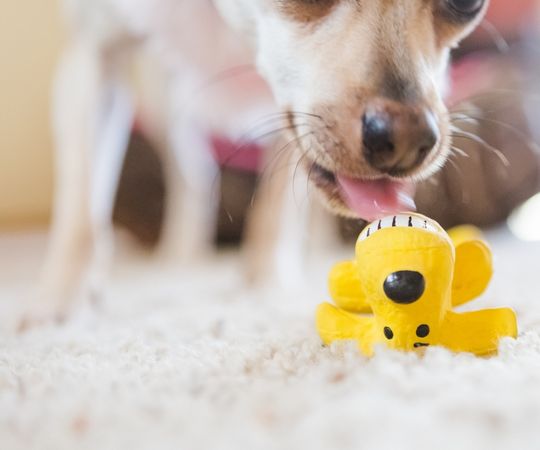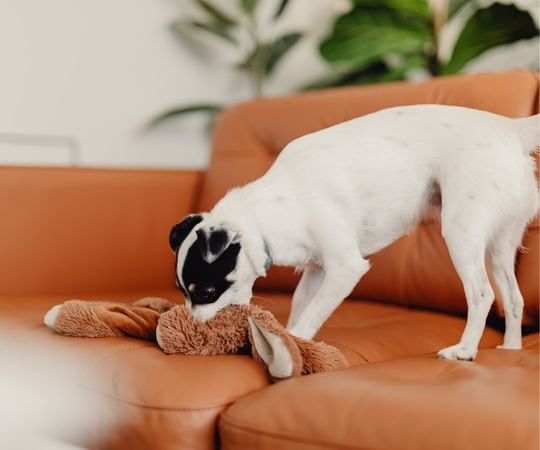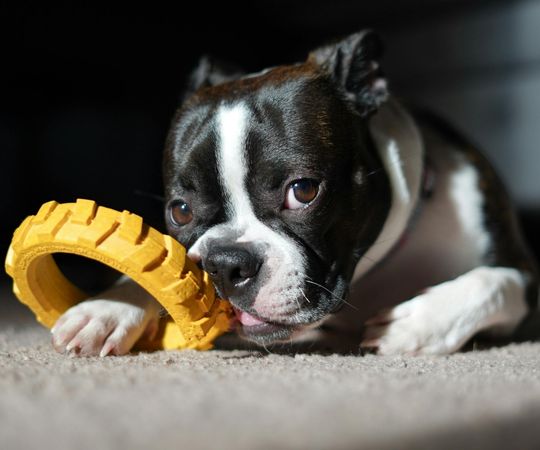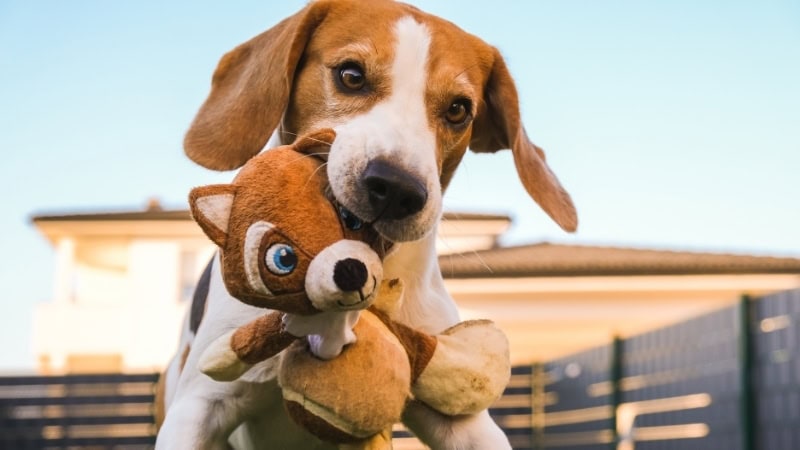
Für jeden Hundebesitzer kann es ein erschreckender Moment sein: Man dreht sich nur kurz um, und der Vierbeiner hat sein Lieblingskuscheltier in Fetzen gerissen, wobei verdächtig viel Füllung fehlt. Was zunächst harmlos erscheint, kann für Hunde, die die Füllung eines Spielzeugs fressen, zu ernsthaften und sogar lebensbedrohlichen gesundheitlichen Komplikationen führen. Dieser Artikel informiert Sie über die möglichen Risiken, die richtigen Sofortmaßnahmen, was Sie beim Tierarzt erwartet und wie Sie ein erneutes Auftreten verhindern können.
Warum frisst mein Hund die Füllung aus einem Spielzeug?
Bevor wir uns mit den Risiken und Abhilfemaßnahmen befassen, ist es hilfreich zu verstehen, dass… Warum Ihr Hund zeigt dieses destruktive Verhalten. Es geht dabei selten um Bosheit oder bloße Ungezogenheit; meist wird es von natürlichen Instinkten und Bedürfnissen angetrieben.
- Jagdtrieb und “Tötungs”-Instinkt: Das ist der häufigste Grund. Für viele Hunde imitiert ein quietschendes Stofftier Form und Geräusch eines Beutetiers. Das Quietschen klingt wie ein Tier in Not und löst so den angeborenen Jagdinstinkt des Hundes aus: Anschleichen, Verfolgen, Zupacken und Töten. Zum Töten gehört das Schütteln und Aufreißen des “Beutetiers”. Das Fressen der Füllung ist der letzte Schritt in dieser tief verwurzelten Verhaltenskette.
- Erkundung durch Mundbewegungen: Welpen und junge Hunde erkunden die Welt vor allem mit dem Maul. Sie lernen durch Kauen und Zerstören von Gegenständen etwas über Beschaffenheit, Geschmack und Haltbarkeit. Die weiche, flauschige Konsistenz von Füllmaterial könnte etwas sein, das sie ganz natürlich gerne kauen und verschlucken.
- Langeweile oder Mangel an Stimulation: Ein gelangweilter Hund ist ein destruktiver Hund. Wenn Ihr Hund nicht genug bekommt körperliche Bewegung oder geistige Anregung, Sie könnten das Zerstören von Spielzeug als selbstbestimmte und sehr unterhaltsame Beschäftigung entdecken.
- Aufmerksamkeitssuchendes Verhalten: Wenn Ihr Hund gelernt hat, dass das Zerreißen eines Spielzeugs eine heftige Reaktion von Ihnen auslöst (selbst eine negative), wird er dieses Verhalten möglicherweise wiederholen. Für manche Hunde ist negative Aufmerksamkeit besser als gar keine.
- Pica: Pica ist eine Erkrankung, die durch das Fressen von Nicht-Nahrungsmitteln gekennzeichnet ist. Sie kann durch Nährstoffmängel, zugrundeliegende Magen-Darm-Erkrankungen, Parasiten oder sogar psychische Probleme wie Angstzustände verursacht werden. Wenn Ihr Hund regelmäßig Nicht-Nahrungsmittel (Füllmaterial, Erde, Steine, Stoffreste) frisst, sollten Sie Pica unbedingt mit Ihrem Tierarzt besprechen.
- Zahnen: Welpen, die zahnen Sie haben wundes, juckendes Zahnfleisch und ein starkes Kaubedürfnis. Obwohl sie normalerweise kauen, um die Beschwerden zu lindern, können sie versehentlich Teile des Spielzeugs verschlucken, das sie zerstören.
Risiken durch das Verschlucken von Spielzeugfüllung bei Hunden
Nachdem wir nun die Ursache kennen, ist es entscheidend zu verstehen, warum selbst scheinbar geringe Mengen an Füllmaterial so gefährlich sein können. Das weiche, harmlose Füllmaterial eines Stofftiers kann erhebliche und sogar lebensbedrohliche Gefahren für den Verdauungstrakt Ihres Hundes bergen.
Das Hauptrisiko besteht in einem Darmverschluss. Die Füllung, die häufig aus Baumwolle oder synthetischen Fasern wie Polyester besteht, ist unverdaulich. Verschluckt ein Hund eine größere Menge, kann sie verklumpen und einen Fremdkörperverschluss im Magen oder Darm verursachen. Dieser Verschluss kann die Blutzufuhr zum Verdauungstrakt unterbrechen und so zu Gewebetod, einem Darmdurchbruch und einer lebensbedrohlichen Bauchfellentzündung führen.
Neben inneren Verstopfungen stellt das Verschlucken von Füllmaterial eine unmittelbare Erstickungsgefahr dar. Ein großes, verdichtetes Stück Füllmaterial kann sich leicht im Hals Ihres Hundes festsetzen, seine Atemwege blockieren und ein sofortiges Eingreifen von Rettungskräften erforderlich machen.
Darüber hinaus ist das Füllmaterial selbst oft ungiftig., Das Spielzeug, aus dem es stammt, ist möglicherweise nicht. Manche Füllmaterialien werden mit chemischen Flammschutzmitteln behandelt, und die farbenfrohen Stoffe enthalten oft Farbstoffe, die Magenbeschwerden verursachen oder giftige Substanzen enthalten können.
Symptome, auf die Sie achten sollten
Wenn Ihr Hund Spielzeugfüllung verschluckt hat, ist es wichtig, auf folgende Anzeichen einer möglichen Verstopfung zu achten:
- Erbrechen oder Würgen
- Appetitlosigkeit
- Lethargie oder Schwäche
- Bauchschmerzen oder Blähungen (Ihr Hund jault oder winselt möglicherweise, wenn Sie seinen Bauch berühren)
- Pressen beim Stuhlgang, Verstopfung oder Durchfall
- Verhaltensänderungen wie Unruhe oder Aggression
Wenn Sie eines dieser Symptome bemerken, kontaktieren Sie umgehend Ihren Tierarzt.
Was soll ich tun, wenn mein Hund die Füllung seines Spielzeugs gefressen hat?
Sollten Sie Ihren Hund dabei ertappen, wie er Spielzeugfüllung frisst, sollten Sie sofort folgende Schritte unternehmen:
- Bleiben Sie ruhig: Ihr Hund spürt Ihre Angst, deshalb ist es wichtig, ruhig zu bleiben.
- Spielzeug entfernen: Entfernen Sie die Spielzeugreste, damit Ihr Hund nicht noch mehr Füllmaterial verschluckt.
- Die Situation einschätzen: Versuchen Sie herauszufinden, wie viel Füllung Ihr Hund gefressen hat und wann er sie gefressen hat. Diese Informationen sind für Ihren Tierarzt von entscheidender Bedeutung.
- Kontrollieren Sie das Maul Ihres Hundes: Überprüfen Sie sorgfältig das Maul Ihres Hundes auf eventuell verbliebene Füllreste und entfernen Sie diese, sofern dies gefahrlos möglich ist.
- KEIN Erbrechen herbeiführen: Erbrechen sollte bei Ihrem Hund niemals ohne ausdrückliche Anweisung Ihres Tierarztes ausgelöst werden. Dies kann gefährlich sein und zu weiteren Verletzungen führen, insbesondere wenn der Gegenstand groß oder scharf ist.
- Rufen Sie Ihren Tierarzt an: Dies ist der wichtigste Schritt. Ihr Tierarzt kann Ihnen basierend auf der Größe Ihres Hundes, der Menge der aufgenommenen Füllung und eventuell auftretenden Symptomen Ratschläge geben.
Was Sie beim Tierarzt erwartet
Wenn Sie Ihren Hund zum Tierarzt bringen, wird dieser wahrscheinlich eine Reihe von diagnostischen Tests durchführen, um die beste Vorgehensweise zu ermitteln.
- Körperliche Untersuchung: Der Tierarzt wird eine gründliche körperliche Untersuchung durchführen, einschließlich des Abtastens des Bauches Ihres Hundes, um nach Schmerzen oder tastbaren Knoten zu suchen.
- Diagnose: Um die Lage und Größe des Fremdkörpers zu beurteilen, kann Ihr Tierarzt eine Röntgenaufnahme oder eine Ultraschalluntersuchung empfehlen. Diese bildgebenden Verfahren helfen festzustellen, ob der Fremdkörper von selbst abgeht oder ob ein Eingriff erforderlich ist.
- Behandlungsoptionen:
- Induziertes Erbrechen: Wenn die Füllung erst kürzlich verschluckt wurde und sich noch im Magen befindet, kann Ihr Tierarzt mit einem sicheren und wirksamen Medikament Erbrechen auslösen.
- Endoskopie: In manchen Fällen kann ein nicht-chirurgischer Eingriff, eine sogenannte Endoskopie, durchgeführt werden. Dabei wird ein dünner, flexibler Schlauch mit einer Kamera und einem Greifinstrument durch den Rachen des Hundes eingeführt, um den Mageninhalt zu entfernen.
- Operation: Wenn der Fremdkörper einen kompletten Darmverschluss verursacht hat oder in den Darm gewandert ist, ist eine Operation notwendig. Bei einer Laparotomie führt der Chirurg einen Schnitt in die Bauchdecke durch, um den Fremdkörper zu entfernen. Dies ist ein größerer Eingriff, der eine Vollnarkose und eine Erholungsphase erfordert.
- Krankenhausaufenthalt: Je nach Schweregrad der Situation muss Ihr Hund möglicherweise stationär aufgenommen werden, um ihn zu überwachen, intravenöse Flüssigkeiten zu erhalten, um einer Austrocknung vorzubeugen, und um die Schmerzen zu behandeln.
Heimüberwachung
Wenn Ihr Tierarzt feststellt, dass die aufgenommene Menge an Füllung gering ist und wahrscheinlich von selbst ausgeschieden wird, rät er Ihnen möglicherweise, Ihren Hund zu Hause zu beobachten. Diese Vorgehensweise erfordert von Ihnen besondere Aufmerksamkeit.
Es ist entscheidend, die Anweisungen Ihres Tierarztes genau zu befolgen. Dazu gehört möglicherweise, Ihrem Hund Schonkost wie gekochtes Hühnchen und Reis zu geben, um die Verdauung zu unterstützen. Beobachten Sie den Kot Ihres Hundes in den nächsten 48 bis 72 Stunden genau, um sicherzustellen, dass der Stuhl ausgeschieden wird. Achten Sie besonders auf die oben genannten Anzeichen einer Verstopfung. Sollten Sie eines dieser Symptome bemerken, kontaktieren Sie umgehend Ihren Tierarzt.
Prävention für die Zukunft
Der beste Weg, um zu verhindern, dass ein solcher Schreckmoment erneut auftritt, besteht darin, proaktive Maßnahmen zu ergreifen, um die Sicherheit Ihres Hundes während des Spielens zu gewährleisten.
- Überwachen, überwachen, überwachen: Lassen Sie Ihren Hund niemals unbeaufsichtigt mit einem Stofftier, insbesondere wenn er in der Vergangenheit schon einmal Stofftiere zerstört hat.
- Langlebiges Spielzeug wählen: Entscheiden Sie sich für hochwertiges, langlebiges Hundespielzeug, das speziell für Hunde mit starkem Kaubedürfnis entwickelt wurde. Achten Sie auf Spielzeug aus robustem Gummi oder Nylon.
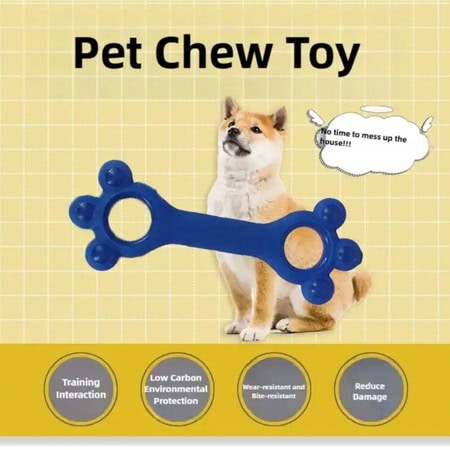
- Spielzeug in der passenden Größe: Achten Sie darauf, dass die Spielzeuge, die Sie Ihrem Hund geben, seiner Größe und Rasse entsprechen. Ein zu kleines Spielzeug kann eine Erstickungsgefahr darstellen.
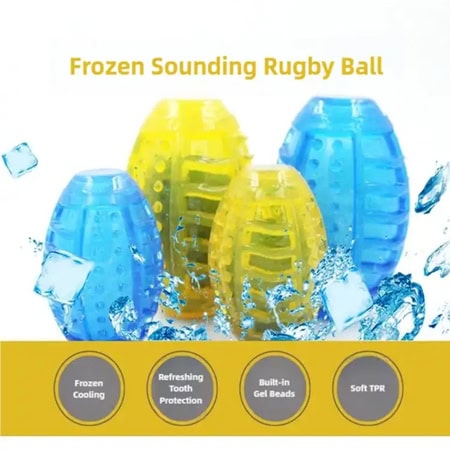
- Spielzeug regelmäßig überprüfen: Überprüfen Sie die Spielzeuge Ihres Hundes regelmäßig auf Abnutzungserscheinungen. Wenn ein Spielzeug auseinanderfällt, sollte es entsorgt werden.
- Bringen Sie den Befehlen “Lass es” und “Lass es fallen” das Wort bei: Diese Kommandos sind für jeden Hundebesitzer unschätzbar wertvoll. Wenn Sie Ihrem Hund beibringen, “aus” oder “hinaus” zu sagen, können Sie verhindern, dass er etwas frisst, was er nicht sollte.
- Sichere Alternativen anbieten: Bieten Sie Ihrem Hund eine Vielzahl sicherer und ansprechender Spielzeuge an, wie zum Beispiel Puzzlespielzeug oder Futterspielzeug, um sie geistig anzuregen und die Wahrscheinlichkeit destruktiven Verhaltens zu verringern.
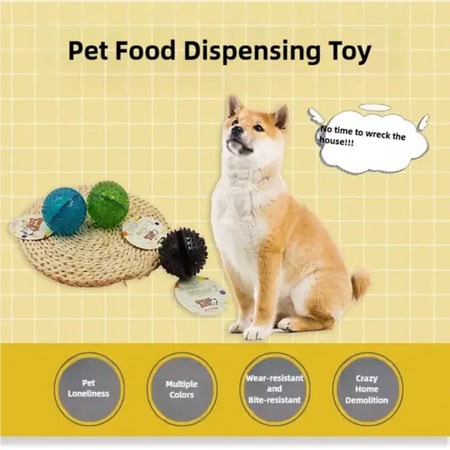
Häufig gestellte Fragen
Ist es für meinen Hund in Ordnung, wenn er nur ein wenig Füllung gefressen hat?
In vielen Fällen passiert eine kleine Menge Füllmaterial den Verdauungstrakt eines Hundes problemlos. Dennoch ist es ratsam, im Zweifelsfall Ihren Tierarzt um Rat zu fragen, da selbst geringe Mengen bei kleinen Hunden zu einem Darmverschluss führen können.
Wie lange braucht ein Hund, um einen Fremdkörper auszuscheiden?
Ist der Fremdkörper klein genug, um ausgeschieden zu werden, geschieht dies normalerweise innerhalb von 10 bis 24 Stunden. Es kann jedoch länger dauern, daher ist es wichtig, den Kot Ihres Hundes mindestens 48 bis 72 Stunden lang zu beobachten.
Kann ein Hund tatsächlich daran sterben, Spielzeugfüllung zu fressen?
Ja, ein Hund kann sterben, wenn er Spielzeugfüllung frisst und dadurch ein vollständiger Darmverschluss entsteht, der unbehandelt bleibt. Deshalb ist es so wichtig, sofort einen Tierarzt aufzusuchen, wenn Sie vermuten, dass Ihr Hund eine große Menge Füllung verschluckt hat oder Anzeichen eines Darmverschlusses zeigt.
Abschluss
Wenn Sie feststellen, dass Ihr Hund Spielzeugfüllung gefressen hat, ist das zweifellos beunruhigend. Doch schnelles und überlegtes Handeln ist der beste Schutz. Ihr erster und wichtigster Schritt sollte immer die Kontaktaufnahme mit Ihrem Tierarzt sein. Dessen Rat ist unerlässlich, egal ob ein Notfalleingriff nötig ist oder eine sorgfältige Beobachtung zu Hause erforderlich ist. Vorbeugung ist letztendlich das wirksamste Mittel. Indem Sie robustes Spielzeug auswählen, das Spielen beaufsichtigen und für angemessene Beschäftigung sorgen, können Sie aus einem Moment der Panik ein dauerhaftes Engagement für die Sicherheit Ihres Hundes entwickeln.

